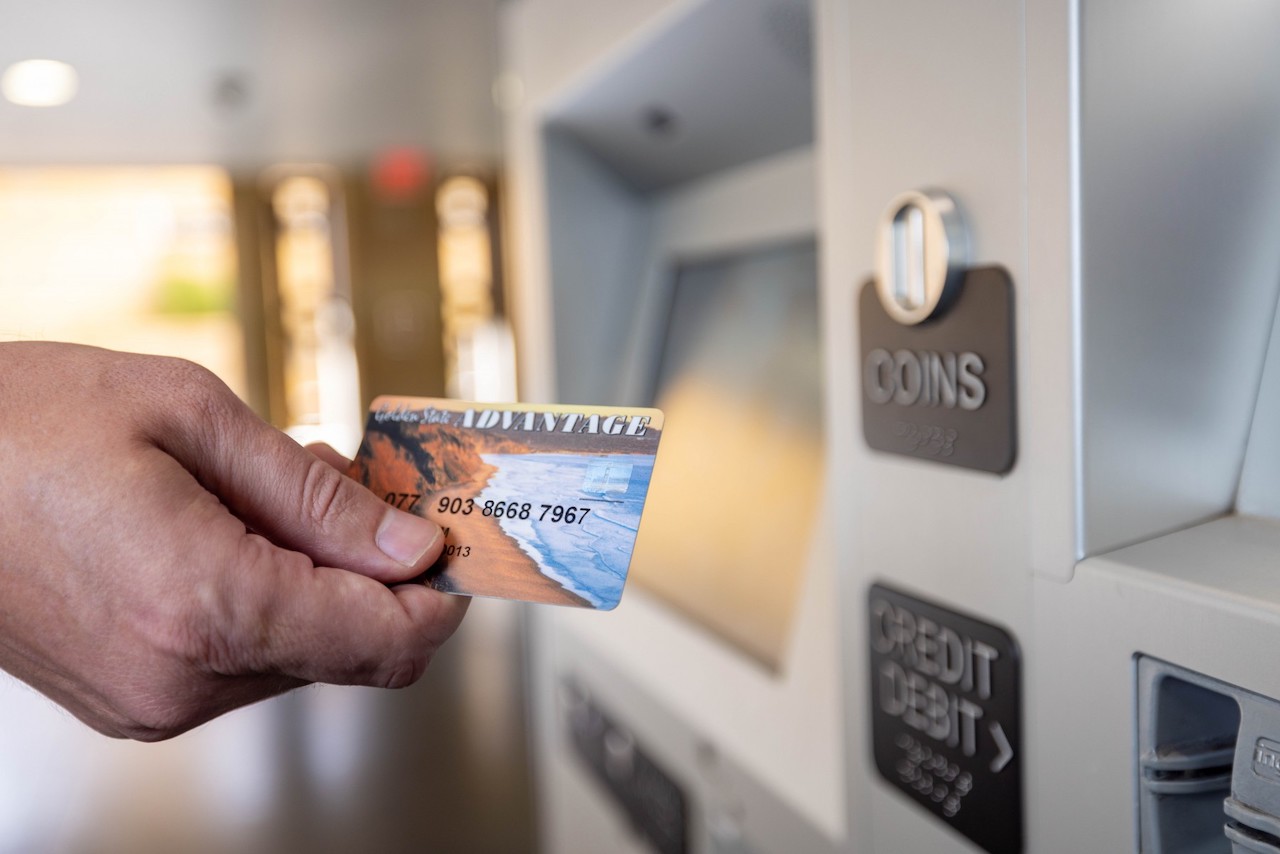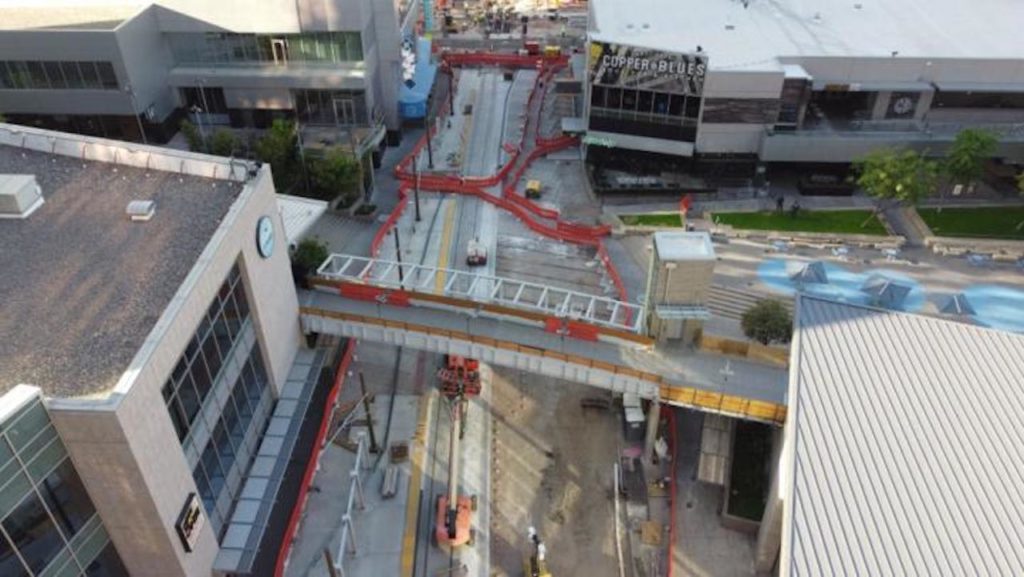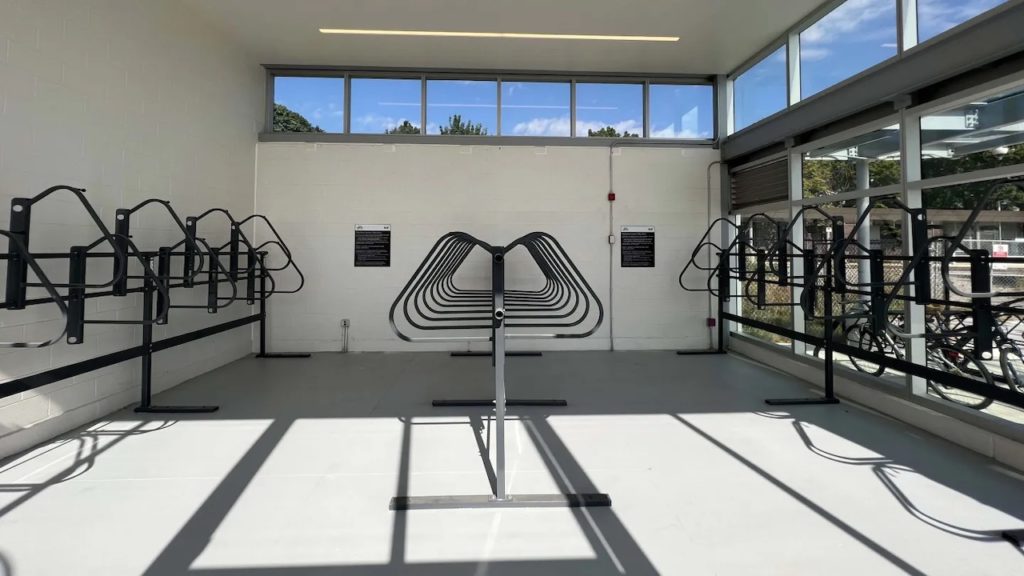
Transit Briefs: Metrolink, WMATA, Valley Metro, MDOT, Metrolinx, LA Metro
Written by Carolina Worrell, Senior Editor
Metrolink's discount program will be available for one year or until the grant funds are depleted.
Metrolink launches discount program for low-income train riders. Also, the Washington Metropolitan Area Transit Authority (WMATA)’s newly improved Orange Line stations will reopen on schedule featuring platform and customer upgrades; Valley Metro’s South Central Extension/Downtown Hub is halfway to the goal line; the Maryland Department of Transportation (MDOT) releases $19.9 billion draft six-year capital budget plan; new reserved bike rooms are opening at five of Metrolinx’s GO stations; and LA Metro releases final limited edition TAP cards featuring rider portraits.
Metrolink
Beginning Sept. 1, Metrolink announced, passengers with a California Electronic Benefit Transfer (EBT) card are eligible for a 50 percent discount on all Metrolink tickets and passes. Riders can use their EBT card at any Metrolink station ticket machine to validate and unlock the discount.
According to Metrolink, a California EBT card is required to validate the discount, while an alternative form of payment is needed to complete the ticket purchase. The discount program will be available for one year or until the grant funds are depleted.
Funding for the discount is made possible by a grant from the Low Carbon Transit Operations Program (LCTOP), administered by the California Department of Transportation (Caltrans).
“We are grateful to Caltrans for providing the funding to make this program happen,” said Metrolink Board Chair Ara Najarian. “This fare discount advances Metrolink’s commitment to public transportation equity and accessibility across the six counties we serve.”
“It’s exciting to introduce new riders to Metrolink trains,” added Metrolink CEO Darren Kettle. “More people in Southern California will now be able to make vital connections to work, school, family, housing and more.”
WMATA
WMATA has announced that five Orange Line stations will reopen on Sept. 6 with upgrades that include new slip-resistant tiles, brighter energy-efficient LED lighting, larger digital display screens and rebuilt platform edges.
During the summer, WMATA closed the five stations for platform reconstruction, customer improvements and to conduct safety-critical repairs on several bridges along this segment of the Orange Line.
The reopening of the five stations, WMATA says, marks the completion of a four-year program to rehabilitate and modernize 20 outdoor stations across the Blue, Orange, Silver, Yellow and Green lines. According to WMATA, the project, which began in 2019, used a new construction strategy to close stations during construction, consolidating years of work into months.
Funded by the Authority’s 10-year, $15 billion Capital Improvement Program, the project, WMATA says, has been the largest, most complex capital construction project completed since its opening in 1976. Today, WMATA adds, these stations provide customers with safer, modern and more accessible stations, including:
- Rebuilding 25,200 feet of platform edges to create safer, more accessible stations.
- Installing over 467,000 square feet of slip-resistant tile to provide better traction in wet conditions.
- Completing nearly 3 million customer trips on our free shuttle bus service during station closures to keep the region moving.
- Installing 89 stainless-steel platform shelters with power outlets and digital screens to provide a more convenient customer experience.
- Enhancing over 2,800 speakers for clearer announcements.
“I’d like to thank our customers, employees, contractors, jurisdictional partners, and everyone in the National Capital Region who made this project possible,” said Metro General Manager/CEO Randy Clarke. “The completion of this project demonstrates our commitment to delivering a sustainable, equitable, and world-class transit system to the National Capital Region.”
Orange Line trains will resume normal service on Sept. 16 to all stations between Vienna and New Carrollton and parking fees will be restored. Some additional work in and around the stations may continue after stations reopen, including the eastside bus relocation at New Carrollton and portions of Park & Ride and Kiss & Ride lots that will be closed through September and as late as October, WMATA said.

Valley Metro
After more than 1.5 million hours of work from construction crews, Valley Metro’s South Central Extension/Downtown Hub light rail project is now 50% complete, the transit system announced. With new utilities upgraded throughout most of the project area, Valley Metro says track installation and station construction continue throughout the corridor.
According to Valley Metro, more than 68,000 feet—nearly 13 miles—of new waterline has been installed on the project so far, and nearly 5000 feet of track has been installed, including 13 pieces of special trackwork.
The project, Valley Metro added, has also created hundreds of jobs for local workers. To date, 1,122 crew members, including carpenters, electricians, ironworkers, have been hired to build the extension, according to the transit system.
According to the transit system, Valley Metro and the City of Phoenix have provided $508,000 in grant funding to 64 local businesses in the project area through the Small Business Financial Assistance Program “to help mitigate the impacts of construction.” Valley Metro’s free business assistance programs also include marketing, community events, accounting and financial planning, and more to businesses in the construction corridor.
In addition to five new miles of track, Valley Metro says the project includes new utilities, landscaping, repaved streets, sidewalks and eight new stations with public art, as well as two new park-and-rides.
MDOT
MDOT on Sept. 1 released its Draft Consolidated Transportation Program (CTP) for fiscal years 2023 to 2028, outlining a $19.9 billion six-year investment to replace and repair aging infrastructure, expand transit opportunities, assist Maryland’s economic recovery, and preserve and expand the state’s transportation network.
The Draft FY 2023-2028 CTP, which outlines investments in each of MDOT’s transportation business units funded by the Transportation Trust Fund, including Maryland Aviation Administration (MAA), Maryland Port Administration (MPA), Maryland Transit Administration (MTA), Motor Vehicle Administration (MVA), State Highway Administration and The Secretary’s Office, the organization says, is nearly $2.2 billion more than the $17.7 billion Final FY 2022-2027 CTP released in January. That increase, according to MDOT, is the result of such factors as $1.3 billion in additional federal formula funds from the bipartisan Infrastructure Investment and Jobs Act (IIJA) passed by Congress last fall, as well as improved post-pandemic revenue estimates and an increased share of state corporate income tax revenue allocated to the organization.
According to MDOT, the Draft CTP proposes to invest 35% of the budget, $6.9 billion, on system preservation to achieve and maintain a state of good repair (SGR) for transit, state roads, bridges, airports and Maryland’s Port of Baltimore. That investment, the organization adds, is $800 million more than last year’s CTP package.
The Draft CTP, MDOT says, also provides for the historic bipartisan agreement Governor Larry Hogan negotiated with lawmakers during the 2022 Maryland General Assembly session to “dramatically increase transportation and infrastructure funding for local governments through the state’s Highway User Revenue program.” As part of the agreement, MDOT says, the share of transportation funding for local jurisdictions increases incrementally from FY 2024 to FY 2027, providing an overall boost of 33% throughout the next six years to “help local jurisdictions advance transportation priorities and provide local matching funds to capitalize on federal grants.”
“This draft plan is Maryland’s largest transportation budget ever, and it continues our commitment to create opportunities for all Marylanders through a transportation network that’s safe, reliable, accessible and equitable for all,” said MDOT Secretary James F. Ports, Jr. “The $2.2 billion increase will deliver priority projects in every county and Baltimore City and provide hundreds of millions of dollars more in Highway User Revenues to local jurisdictions. While the infusion of IIJA funds is helpful, it is important to remember that the majority of federal formula funding was already allocated in the Final FY 2022-2027 CTP.”
For the six years of the Draft FY 2023-2028 CTP, MDOT says, Maryland has programmed $1.3 billion in “new” IIJA federal formula funding: $166 million for transit, $178 million for airports and $966 million for highways.
These allocations, MDOT says, are based on the federal formula outlined in the IIJA by the Federal Government. “The MDOT team is working closely with our federal partners on the specific criteria to program additional projects for both transit and highways,” the organization said.
According to MDOT, some additional project funding may also be available through discretionary grants that are part of the IIJA package and other longstanding federal grant programs. MDOT says it will continue to work with local jurisdictions to apply for such grants, as available.
“IIJA funding will aid long-term SGR investments and fulfill Governor Hogan’s commitment to advance at least one new priority project in every county and Baltimore City in the form of new highway, transit or aviation projects,” the organization said. MDOT’s Draft FY 2023-2028 CTP includes those projects, which are outlined here.
The full Draft FY 2023-2028 CTP is available to download below.
Metrolinx
Metrolinx has announced that new reserved bike rooms are opening at the Rutherford East, Cooksville, Pickering, Centennial and East Gwillimbury GO stations, giving customers a new place to park their bike.
A total of 140 new secure spots, which Metrolinx says are by reservation only to “help ensure that customers’ bikes are kept safe and secure,” are available at the five stations with more scheduled to come later this year.

The initiative is part of Metrolinx’s goal to “increase station access for customers with a variety of travel preferences–so, those who live too far to walk and don’t want to drive now have another option.”
“These reserved bike rooms will make it much more convenient for customers to get to and from their nearest GO station,” said Metrolinx.
Each spot costs $50 for a one-year reservation. Reserved bike room registration forms must be submitted no later than the 15th of each month to gain access on the 1st of the next month. For example, Metrolinx says, to gain access to the new reserved bike rooms on Oct. 1, customers must submit a registration form for a spot by Sept. 15.
Customers can apply to reserve a spot here and will then receive a code that they can use to access the bike parking room.
LA Metro
The final summer release of three limited-edition Metro Art on TAP cards featuring artworks commissioned by Metro Art for the rider portraits series are now available at select stations and Customer Centers this week, LA Metro announced.
The three new Art on TAP cards are “Memory and Perspective” by José M. Loza, “Vovó Santinha” by Cat Ferraz, and “Wall of Concrete” by Kristina Ambriz.

As with previous rounds of Art on TAP cards by Metro Art released in June and late July, and the inaugural set of Art on TAP in 2019, LA Metro says the portraits “evoke the intimate and universal stories of riders on the transit system.”
The rider portraits are also featured on the Metro Art Bus, on digital screens installed at A Line (Blue) and E Line (Expo) stations, and in the Union Station Passageway Art Gallery as part of the multi-site exhibition We Are…Portraits of Metro Riders by Local Artists.



